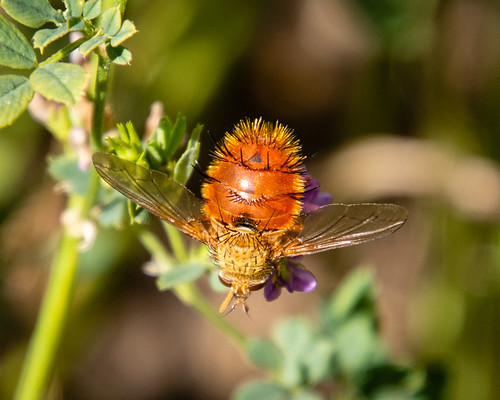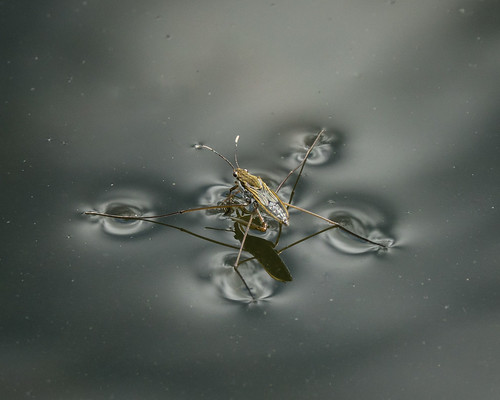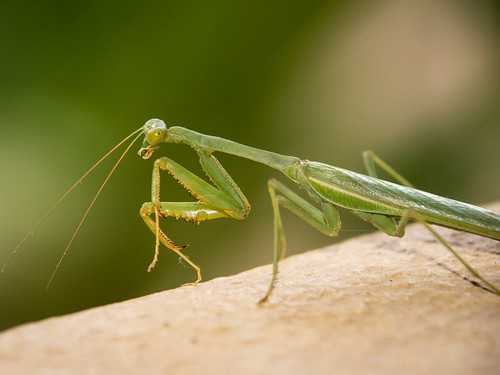Insectaggedon – the media has been full of stories about the rapid decline in the world’s insect population. And yet, is it any wonder? Pronghorn are graceful, owls are mysterious, pandas are adorable, but we don’t show insects much love. In fact, our first reaction when we spot a spider in the house or an ant hill in the garden is to destroy it. We spray our gardens and crops with pesticides, paying little attention to the impact this will have on other wildlife or the environment as a whole.
That’s Amazing
“Well, let me tell you, ants are the dominant insects. They make up as much as a quarter of the biomass of all insects in the world. They are the principal predators. They're the cemetery workers.” (E. O. Wilson)
There are 30 million different species of insects (as opposed to 5000 species of the furry animals we find easy to love). That’s 60% of all animal species. Put them all together and they would “outweigh all the fish in the oceans and all the livestock munching grass on land.” They play a vital role in our ecosystem – from pollinating crops to recycling dead trees and controlling pests.
Insects are also amazingly beautiful. Fireflies light up the night. Jewel beetles have iridescent, brilliantly coloured bodies. The wings of butterflies and moths offer a diversity of rich colours and patterns. The Flight of the Bumblebee by Nikolai Rimsky-Korsakov pays homage to a common insect.
Insects have influenced both religion and culture. The Buddhists viewed cicadas as a symbol of resurrection because of their cyclical reappearances. The humble dung beetle played a role in ancient Egyptian art and religion. “People saw how the scarab beetle (Scarabaeus sacer) rolled a ball of manure along the ground and concluded that a giant celestial dung beetle must roll the sun across the sky each day.” Silkworms – and the silk they produced – were a driving force in opening up trade between Europe and China and led Christopher Columbus to the Americas in his search for the quickest sea route to the Orient.
Engineers designing shock absorbers for a fighter jet studied grasshopper legs. The venom from deathstalker scorpions is being used in clinical trials to fight cancer. Cockroaches thrive in filthy environments thanks to the super antibiotics in their brains – antibiotics that may someday help humans to fight off bacteria that no longer respond to current medical options.
Many insects display superpowers that cannot be matched by humans. Dragonflies have very small brains, but they successfully capture their prey 97% of the time by focusing on one particular insect and ignoring all the rest. When threatened, bombardier beetles spray their attacker with a “boiling hot mixture of caustic chemicals. . . . The beetle itself is not harmed by the fiery chemical reaction. Using two special chambers inside the abdomen, the bombardier beetle mixes potent chemicals and uses an enzymatic trigger to heat and release them.”
Insects are often caring parents: “Giant water bug fathers carry their eggs on their backs, keeping them oxygenated and hydrated. . . . Bess beetles form family units, with both parents working together to rear their young. Their relationship is so sophisticated they've developed their own vocabulary and communicate with each other by squeaking.”
All I’m Asking is for a Little Respect
“If all mankind were to disappear, the world would regenerate back to the rich state of equilibrium that existed ten thousand years ago. If insects were to vanish, the environment would collapse into chaos.” (E. O. Wilson)
Reports of declining insect numbers have dominated the media over the past few years. Although there have been flaws or gaps in some of the research,* there is no doubting that the populations of many insect species are declining rapidly.
Despite recognition that shrinking insect populations will have harmful consequences to the ecosystem as a whole, there has been a limited concrete response. Researchers deplore the lack of funding, noting that only a few species are being monitored on a consistent basis – honey bees, monarch butterflies, some species of mosquitoes. What funding is available is often focused on protecting agricultural crops and doesn’t acknowledge the broader relevance of insects to our ecosystem.
The lack of awareness of insects’ importance is demonstrated by their absence from educational curriculum and textbooks. A study of 88 introductory biology textbooks published since 2000 showed that they “contain 75% less insect-related material than those published before 1960; the average modern text now allots just 5.67 pages to insects, accounting for a mere 0.59% of book content.” The study’s authors “place these trends within a larger underrepresentation of insects in science, and also a decline in appreciation for both biodiversity and natural history. Pages once devoted to animals and plants are now reserved for genetics and cell biology. The effect is one of detachment from nature in general and insects in particular.”
Conservation organizations fail to counter society’s lack of respect for insects. The cuddly panda is the icon of the World Wildlife Fund. The Canadian Wildlife Federation invites donors to adopt “a beautiful bear . . . a whimsical wolf . . . a magnificent moose” – there’s not even a cute little ladybug.
Unsung Heroes
“I'm obsessed with insects, particularly insect flight. I think the evolution of insect flight is perhaps one of the most important events in the history of life. Without insects, there'd be no flowering plants. Without flowering plants, there would be no clever, fruit-eating primates giving TED Talks.” (Michael Dickinson)
Paul Manning, a doctoral student in zoology at the University of Oxford, describes insects as “the unsung heroes, the little things that run the world” but urges people to move beyond their functional importance to a broader appreciation of insects: “When we experience the fascinating world of insects firsthand, the dominant dialogue of ‘insects as ecosystem service providers’ begins to shift. Instead, we start to recognise the beauty, mystery and wonder of the insect world for what it is: beautiful, mysterious and wonderful. Through building a stronger appreciation of the important inherent value of insect biodiversity, hopefully ‘what do they do for us?’ will share more space with ‘what can we do for them?’ ”
* The recent analysis of declining insect populations published in Biological Conservation was a review of recent literature, but its choice of search terms meant it only included articles that reported a decline in insect populations and reported primarily on the northern hemisphere.


